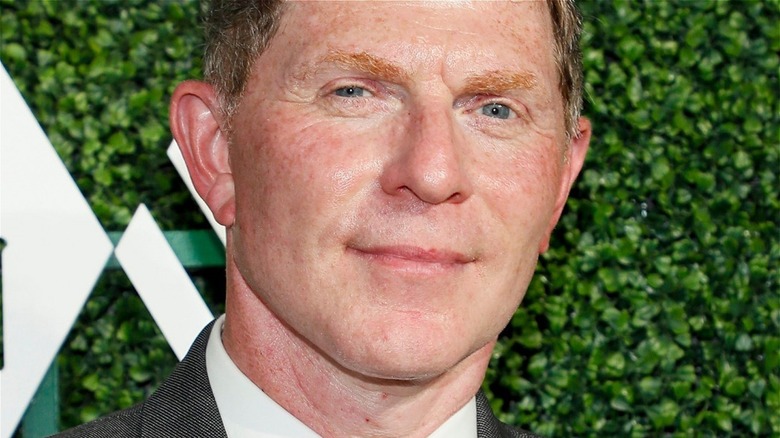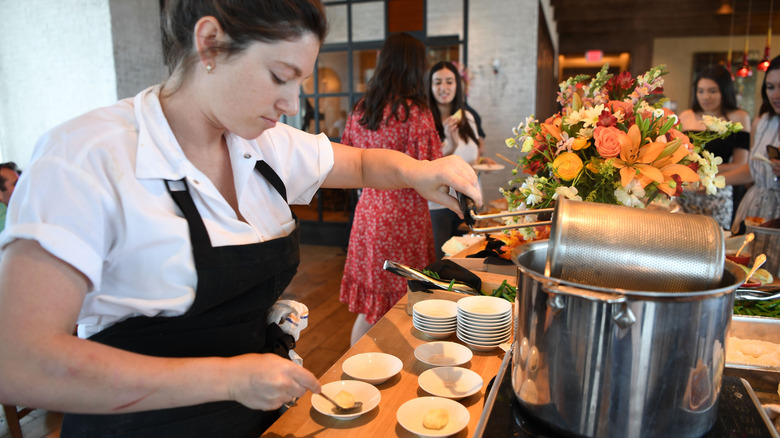Bobby Flay On The 'Vicious Cycle' Of Restaurant Economic Survival
While Food Network fans watch episodes of "Beat Bobby Flay," many people long to enjoy a taste of his dishes at Bobby Flay's restaurants. The popular celebrity chef has created a restaurant empire that includes both high-end and casual restaurants. Given his long career, Flay has seen both the highs and lows within the industry.
During a recent appearance on "CNN This Morning," Flay commented that the restaurant is a daily focus group about how people feel about the economy. He went on to explain that he has seen this type of consumer "tightening of the wallet" during previous economic plights in the past. His current cautionary tone seems different than his earlier takes on a restaurant's approach to the fluctuation of food, labor, and other business costs.
In 2014, Flay told CNBC that it can be difficult to make it in the restaurant business. During that economic downturn, Flay chose not to pass on food inflation costs to the guests by raising menu prices, specifically stating that he would take the loss because "I don't want to scare the consumer away by raising prices." Although that stance worked eight years ago, it appears that Flay has a new perspective on the real costs consumers are willing to pay for a dinner at one of his restaurants. Whether or not his decision is one of economic survival or just a sign of the time remains to be seen.
Bobby Flay believes that consumers will become aware of real food costs
According to an August 2022 survey by the National Restaurant Association, higher costs are not only impacting restaurateurs' bottom line, but those costs are being passed onto the consumer via higher menu costs. Each element has increased from the salaries and benefits required to draw employees to the workforce to the money spent to procure ingredients for dishes. In some cases, those extra fees are being passed onto the diner.
As Bobby Flay commented on CNN This Morning, he believes that the restaurants are going to have to keep charging more for menu items so that they can survive, which in turn creates a vicious cycle. Flay believes that diners are getting to the point where they can fully appreciate what it truly costs to enjoy a restaurant meal. Although getting people to accept a $24 chicken dinner one day and a $38 check the next is not going to happen overnight, he believes the change is coming. That higher price tag comes not just from ingredient costs but also from paying more for labor in a highly competitive salary market. Even though Flay has seen some diner's check amounts being lower, he does not feel it is the restaurant's responsibility to absorb all the costs and a profit is needed in order to maintain the business. For now, the dining checks might be squeezed a little, but a high tab might be coming down the road.

